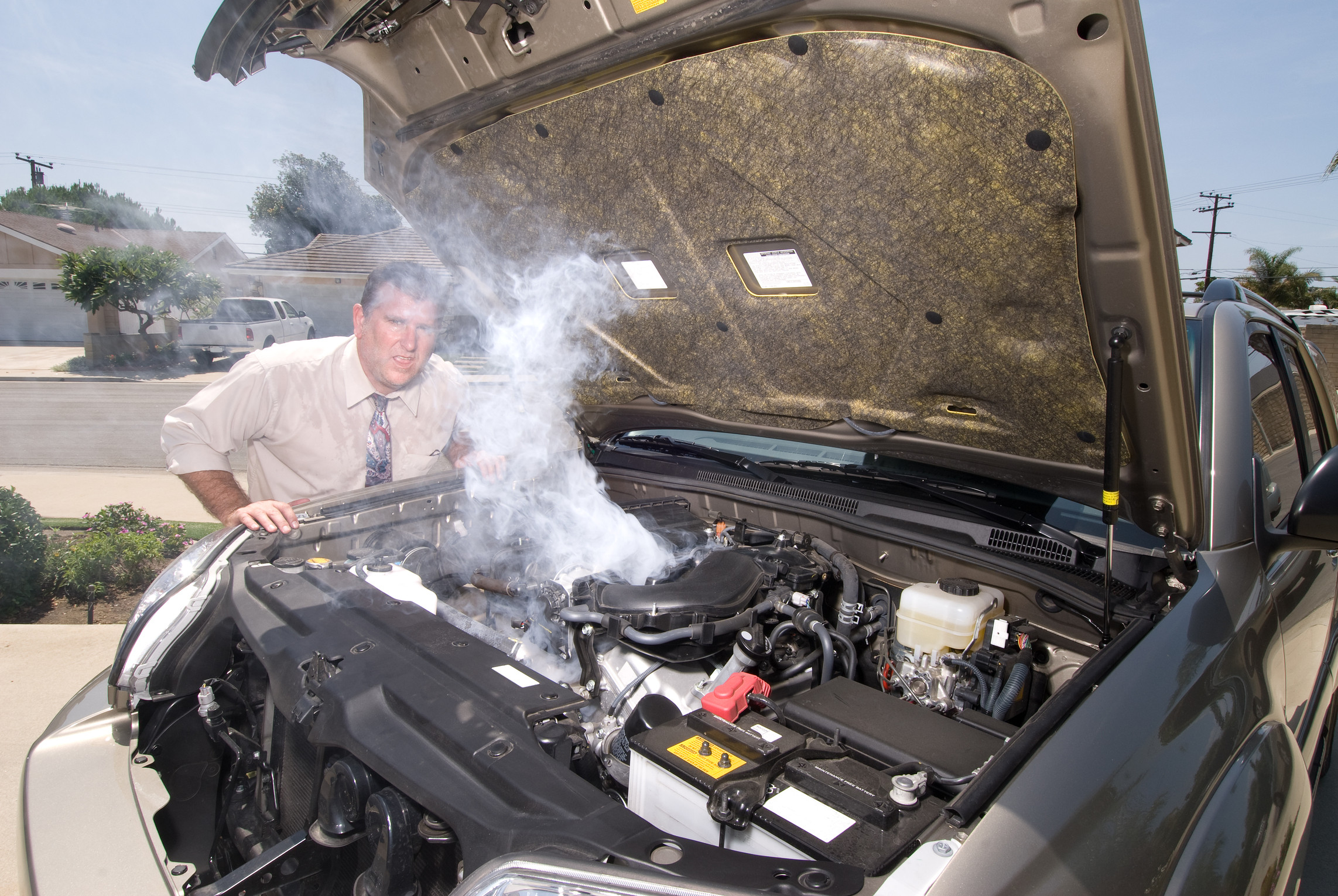
It’s summer driving season again, and as temperatures climb into the 90’s and even triple digits, the chances increase that you’ll encounter signs of an overheated car somewhere in your travels.
Here are some steps that you can follow on how to deal with your car when it’s overheating:
1. It’s a great idea to have an extra bottle of coolant aka antifreeze on hand in your car among your first aid kit and other emergency supplies. You’ll also want to bring along a gallon container of water. Engines tend to overheat when the coolant level gets too low so be sure to keep it topped off. Use your drinking water to keep it full should you run out of coolant.
2. Monitor your temperature gauge on the dashboard for signs that your car’s engine is getting too hot. Should you spot a notification light, turn off your air conditioner right away to lessen the strain on your engine.
3. Here is a handy trick in case your problem doesn’t go away quickly. Turn up your car’s heater to its maximum capacity and open your windows so you don’t melt away in the heat. Transferring the heat away from the engine again will ease the strain and possibly keep it from breaking down.
4. If your engine is not responding to the above three steps, then it is vital that you pull the car over as soon as possible and turn off your engine. Without opening the hood inspect the front of the car to determine if steam is coming off the engine. If so, you’ll need to allow 30 minutes or more for the engine to cool before trying to pop open the hood manually. If your car is equipped to safely pop open the hood from inside the vehicle, then you can go ahead and do that without waiting. Regardless, you may want to seriously consider calling your roadside assistance company at this time for help.
5. Again, allow the engine to cool. You don’t want to risk getting a serious burn. Next, check the coolant tank level. You may also figure out what is going on by checking under the car for drips or a puddle which would indicate that the coolant tank is leaking.
If you do have a leak, carefully input a 50/50 split of coolant and water into your radiator once your engine is sufficiently cooled. Use a towel to protect your hand as you open the cap and pour the liquids. Then drive your vehicle to a quality repair shop.
If you don’t have a leak, then you’ve got a different kind of problem. Your best bet at this point is to call a tow truck for help and have a certified technician check out your vehicle.
Related Posts
When you think about car maintenance, you probably focus on oil changes, tire rotations, and maybe even brake pad replacement. But what about your brake fluid? If you’ve ever wondered, “What does brake fluid do?” or “Why is brake fluid important?”, you’re not alone. Brake fluid might not be the most talked-about part of [...]
Is that high-pitched squeal from your brakes driving you—and everyone else—crazy? Don’t ignore it. Squeaky brakes aren’t just annoying, they’re your car’s way of saying something needs attention. Whether you're cruising through Salt Lake City or winding up Idaho’s mountain passes, here’s what’s likely going on, how you can fix it, and when it [...]
Whether you’re cruising down I-15 toward Zion, exploring the scenic routes of Eastern Oregon, or heading north to catch the Tetons in Idaho, a smooth summer road trip starts with smart car maintenance. Before you pack the snacks and load up the playlist, it’s worth taking the time to make sure your vehicle is [...]





